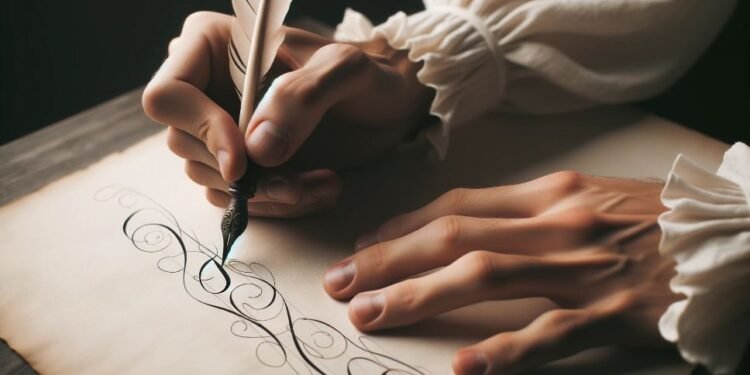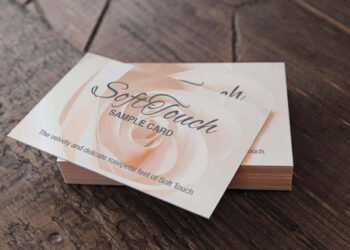Origin & Evolution
The allure of the cursive script lies deeply entrenched in the ancient realms of Greece and Rome. Designed for the sheer purpose of writing acceleration and to show kindness to the quill, cursive’s origin holds tales of yore. Venture back to the 1500s, and you’d find English speakers articulating thoughts in the ‘Secretary Script’ or ‘Secretary Hand.’ This era was just the beginning, as Europe brimmed with diverse cursive styles.
Cursive’s Varied Styles
As centuries rolled on, cursive scripts took many forms. The elegant Carolingian Minuscule, the intense Blackletter, the cultured Humanist Minuscule, the sleek Italic Script, and the sophisticated Copperplate echoed the rhythm of its time, showcasing regional nuances and the era’s functional demands. Amid these styles, our protagonist, the cursive’ s,’ stood tall. While its uppercase resembles its print sibling, the lowercase looks like a ship’s sail caught in the wind. Its unique features make it a marvel, smoothly linking it to neighboring letters.
Mastering the Cursive S
The technique to inscribe the cursive ‘s’ is indeed an art. Crafting an uppercase ‘S’ demands precision. Beginning at the base, one conjures a loop downward, retraces the initial line with a soft semi-circle, surpasses the endpoint of a typical print,’ and concludes with a dainty hook to the right. It’s a dance of the hand that leaves an imprint of elegance.

Cursive in Today’s World
Despite rapid technological advancements, cursive has retained its sheen. It continues to be revered for its beauty, historical depth, and the grace it lends to handwriting. As the world modernizes, cursive, with its myriad styles, finds its niche in the art of calligraphy and personal scripts, carrying forward legacies of ages gone by.
The Bond Between Cursive and The Quill
The emergence of cursive, particularly the “cursive s,” was a response to the delicate nature of the quill. The less one lifted the quill off the paper, the longer it lasted and the less the ink splattered. It’s an intriguing relation where a tool’s limitation birthed a writing style cherished today.
In Conclusion
Traversing the journey of the “cursive s” is akin to taking a walk through history. It’s not merely about a script but a reflection of evolving civilizations, their needs, artistic expressions, and adaptations. The cursive’ s’, with its unique form and rich backstory, serves as a timeless testament to the ever-evolving art of writing. As we appreciate its beauty, let’s also revel in the stories it whispers from the annals of time.
Also, Read Green to Jet Green-Aaron Rodgers’ NFL Journey Unfolded.
FAQs
What’s the origin of cursive writing?
Cursive writing finds its roots in ancient Greece and Rome. It was designed to accelerate writing and reduce wear on the quill and ink, the primary writing tools during those times.

What was the initial recognized cursive script by English speakers?
English speakers’ first recognized cursive script was the ‘Secretary Script’ or ‘Secretary Hand.’ It emerged in the 1500s and marked one of many European cursive styles.
Are there different styles of cursive writing?
Yes, several styles have evolved. Some notable ones include Carolingian Minuscule, Blackletter, Humanist Minuscule, Italic Script, and Copperplate. These styles reflected regional variations and different periods’ aesthetic or functional preferences.
How does the cursive ‘s’ differ from its print version?
The uppercase cursive ‘s’ mirrors its print counterpart. However, the lowercase’ s’ in cursive appears like a small sail with a line extending upward to the right, making it distinct and facilitating connection to the following letter.
How do you write a cursive ‘s’?
For an uppercase ‘S,’ start at the bottom, draw a loop downward, retrace with a semi-circle, go beyond the typical endpoint of a print ‘s,’ and end with a small hook to the right.
Why is cursive writing still valued today?
Cursive retains its significance due to its aesthetic appeal, historical importance, and fluidity in handwriting. In modern times, it finds appreciation in calligraphy and personal writing styles.
How did the quill influence cursive writing?
The cursive method, including the “cursive s,” evolved primarily to address the practical constraints of the quill. Writing in cursive reduced the need to lift the quill frequently, preventing ink splatter and ensuring the quill’s longevity.
How does the cursive ‘s’ signify the evolution of cursive writing?
The cursive ‘s’ reflects broader socio-cultural and technological shifts over time. Its evolution from the days of the quill to contemporary calligraphy underscores the changing dynamics of written communication.
Is cursive ‘s’ challenging to master?
Like any art form, mastering the cursive ‘s’ requires practice. With consistent effort, one can achieve fluency in writing this elegant character.
Why is the history of “cursive s” significant?
The “cursive journey offers insights into the evolution of writing styles, the socio-cultural influences of different eras, and the intricate relationship between tools and scripts. It’s a fascinating exploration of history through the lens of a single character.


















